Landscaping on a Budget: Affordable Tools and Techniques for your Garden
- February 8, 2024
- 0 comment
Transform your garden on a budget! Discover affordable tools & techniques for a lush outdoor space. Maximize beauty without breaking the bank. Transforming your garden into a lush, inviting outdoor space doesn’t have to drain your wallet. With the right approach, affordable tools and techniques can work wonders, allowing you to maximize beauty without breaking the bank.
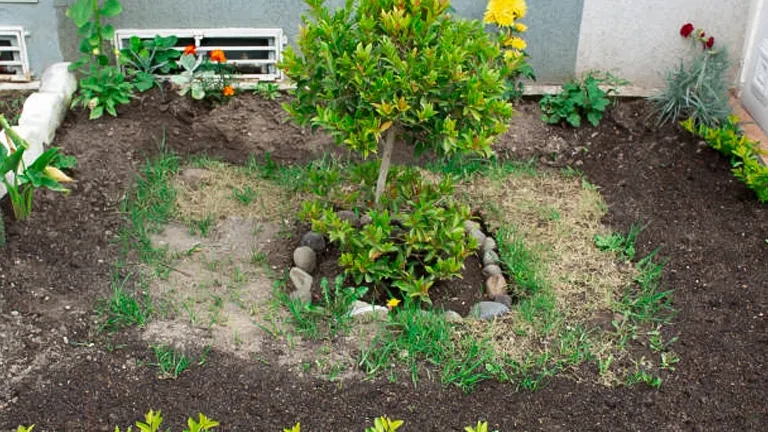
Whether you’re a seasoned gardener or a green-thumb-in-training, our guide to landscaping on a budget will provide you with practical tips and creative ideas to enhance your garden’s appeal. Dive into the world of cost-effective gardening and see how simple changes and smart choices can lead to an enchanting backyard oasis.
Table of Contents
- The Foundation of Budget Landscaping
- Strategic Planning and Design
- Tools, Materials, and Resources
- Innovative Planting Strategies
- DIY Landscaping Projects
- Ongoing Care and Maintenance
- Advanced Budget Gardening Techniques
- Conclusion
- FAQs
The Foundation of Budget Landscaping
Mindset and Approach
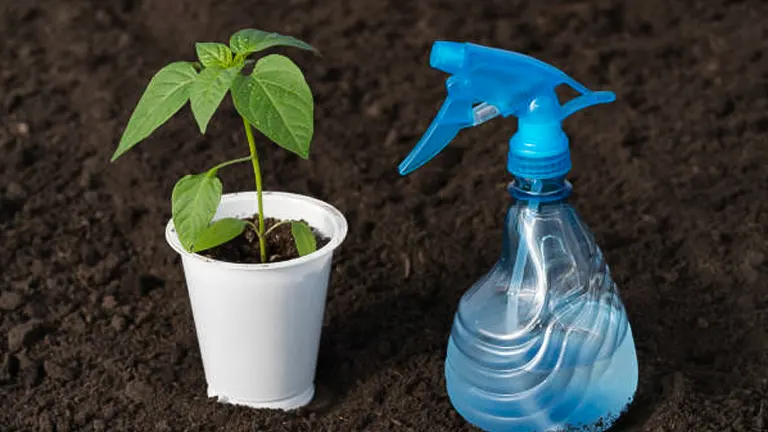
Successful budget landscaping starts with a shift in perspective. Instead of seeing financial limitations as a barrier, view them as an opportunity for creativity and innovation. Planning your garden transformation with a budget-conscious mindset will lead to more thoughtful, sustainable choices.
Here’s how to cultivate this mindset:
- Resourcefulness: Look for opportunities to repurpose materials, swap plants with neighbors, or utilize community resources. This approach not only saves money but also encourages a deeper engagement with your garden and community.
- Sustainability: Consider the long-term impact of your landscaping choices. Opting for drought-resistant plants, creating a composting system, and implementing water-saving techniques are all sustainable practices that align with budget-friendly landscaping.
- Creativity: Use constraints as a springboard for innovation. Challenge yourself to think outside the box, whether it’s in designing with materials at hand or finding new uses for common garden elements.
Understanding Your Garden’s Needs

Before making any changes, take the time to assess your garden’s specific conditions. Understanding the type of soil, the patterns of sunlight, and the climate in your area will guide you in making informed decisions about plant selection and garden layout.
Expand your assessment to include:
- Soil Health: Beyond soil type, investigate soil pH, nutrient levels, and drainage capabilities. Simple at-home testing kits or local extension services can provide this information, guiding your choices in amendments and plant selection.
- Microclimates: Recognize that different areas of your garden may have varying microclimates. Identifying these can help you place plants where they will thrive, reducing the need for costly interventions later.
- Wildlife Considerations: Consider the local wildlife in your garden planning. Selecting plants that attract beneficial insects for pest control or designing barriers to protect your plants from being eaten can save money and enhance your garden’s ecosystem.
Setting Achievable Goals
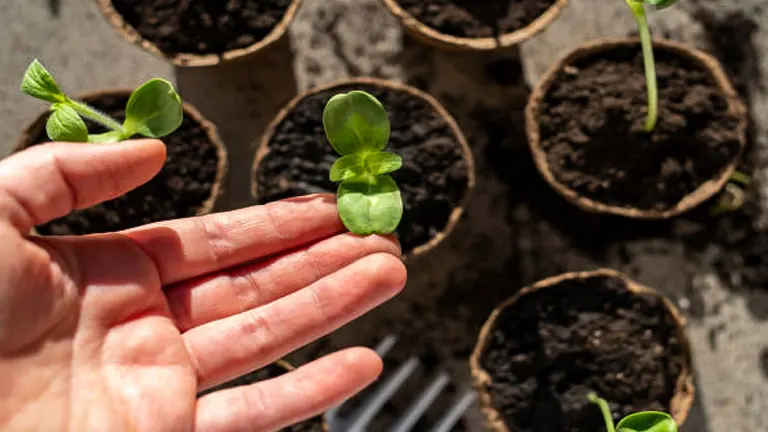
Consider what you want to achieve with your garden. Whether it’s enhancing curb appeal, creating a space for relaxation, or growing your own food, setting clear, achievable goals will help prioritize your spending and efforts.
Consider these additional facets when defining your gardening aspirations:
- Functionality and Aesthetics: Balance the practical uses of your garden (like vegetable production or play areas) with aesthetic elements that provide visual pleasure and relaxation. This balance ensures that your garden is not only useful but also a source of joy and beauty.
- Phased Objectives: Break down your overarching goals into smaller, phased objectives. This approach allows for gradual improvement and flexibility to adjust plans as you learn what works best in your garden.
- Adaptability: Be prepared to modify your goals based on initial outcomes and new insights. A flexible mindset will help you respond to unexpected challenges or opportunities, making your gardening journey more rewarding and less stressful.
Enhancing each foundational aspect of budget landscaping with these deeper insights and strategies provides a robust framework for readers. It prepares them to embark on their gardening projects with confidence, equipped with a comprehensive understanding of how to make the most of their resources, adapt to their garden’s unique conditions, and achieve their vision in a sustainable, cost-effective manner.
Strategic Planning and Design
Maximizing Your Space with Advanced Design Principles
When planning your garden, employing advanced design principles can transform even the smallest spaces into vibrant, functional areas. Beyond the basics of balance, contrast, and repetition, consider these additional concepts:
- Layering and Texture: Use a variety of plant heights, textures, and foliage types to create depth and interest. Layering plants from tallest in the back to shortest in the front makes your garden look fuller and more complex, even if it’s small.
- Color Theory: Understand the emotional impact of colors and how they can influence the perception of space. For example, cool colors (blues, greens, purples) can make a space feel larger and more serene, while warm colors (reds, oranges, yellows) can create a sense of excitement and intimacy.
- Focal Points and Lines: Create focal points using distinctive plants, art pieces, or water features to draw the eye and give the garden a visual anchor. Use lines, whether curved or straight, to guide movement and sight through the garden, adding a sense of order and cohesion.
Creating a Detailed Master Plan
A detailed master plan goes beyond simple sketches, incorporating elements such as soil health, sun exposure, and water requirements. Here’s how to refine your master planning process:
- Site Analysis: Start with a detailed analysis of your site, noting sun patterns, wind direction, existing vegetation, and topography. This step helps identify the best locations for different types of plants and garden features.
- Budget Phasing: Break down your master plan into phases based on priority and budget. Assign costs to each phase to help track spending and make adjustments as needed. This method ensures that you can achieve your garden goals without financial strain.
- Sustainability Considerations: Integrate sustainable practices from the beginning. Consider incorporating rain gardens, native plants, and composting areas into your plan. These elements reduce maintenance and costs over time while benefiting the environment.
Innovating with Multi-functional Features
Multi-functional features are key to maximizing both the utility and aesthetic appeal of your garden. Here are additional ideas and considerations:
- Edible Landscaping: Combine beauty and productivity by using edible plants as decorative elements. Herbs, fruit trees, and vegetable plants can serve as both attractive landscape features and sources of fresh produce.
- Water Features: A small recirculating water feature can add visual and auditory interest to your garden while providing water for birds and pollinators. Consider a DIY birdbath or a small fountain that runs on solar power to keep costs and maintenance low.
- Storage Solutions: Integrate storage into seating or raised beds to hide garden tools and supplies. For instance, a bench with a lift-up seat can offer a restful spot in the garden while keeping your space tidy and organized.
By adopting these enhanced strategies for strategic planning and design, you can create a garden that is not only beautiful and budget-friendly but also rich in variety and sustainability. These approaches encourage gardeners to think creatively and plan meticulously, ensuring that every element of the garden serves multiple purposes and contributes to the overall vision.
Tools, Materials, and Resources
In-depth Analysis of Budget-Friendly Tools
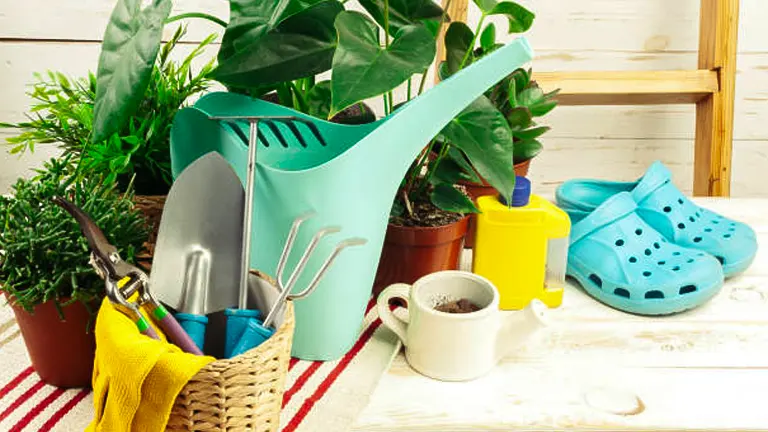
When it comes to garden tools, investing wisely can save you money in the long run. Choosing tools that are durable and versatile means you’ll buy fewer of them over time. Consider tools made from high-quality materials such as stainless steel or carbon fiber, which resist rust and last longer. Ergonomic designs can prevent injuries, potentially saving on healthcare costs.
- Multi-Tool Systems: Look into multi-tool systems where one handle can attach to various heads (spade, fork, hoe, etc.). This can be more cost-effective and space-saving than purchasing individual tools.
Creative Sourcing of Materials with a Focus on Sustainability
Sourcing materials creatively not only saves money but also contributes to a more sustainable garden. Repurposing and recycling materials reduce waste and decrease the demand for new resources.
- Community Repurpose Programs: Many communities have programs or shops dedicated to repurposing building materials and garden supplies. These can be excellent sources for trellises, paving stones, and even planters at a fraction of the cost.
Leveraging Local Networks and Online Communities: A Detailed Approach
Local networks and online communities offer more than just cost savings; they provide access to a wealth of knowledge and experience. Participating in seed swaps, plant cuttings exchanges, and group buys for bulk materials can drastically reduce your gardening expenses.
- Skill Sharing: Many gardening groups also offer skill-sharing workshops or labor exchanges, where you can learn new skills or get help with larger projects in exchange for your own time or expertise.
Budget Analysis Table for Garden Tools and Materials
To provide a clearer picture of potential savings and help readers make informed decisions, below is a table comparing costs of new, high-quality tools versus alternatives:
| Tool/Material | New Purchase Cost | Multi-Tool System Cost | Second-Hand or Repurposed Cost | Potential Savings |
|---|---|---|---|---|
| Spade | $30 | Part of a $80 system | $10 | $20 |
| Pruning Shears | $25 | Not applicable | $8 | $17 |
| Garden Fork | $35 | Part of a $80 system | $12 | $23 |
| Planters | $20 per planter | Not applicable | $5 (repurposed items) | $15 per planter |
| Trellises | $25 | Not applicable | $0 (DIY from repurposed wood) | $25 |
| Total Potential Savings | $100+ |
Note: The costs and savings are illustrative estimates to provide a comparative analysis. Prices will vary based on location, quality, and specific deals available.
The table effectively illustrates the significant financial advantages of adopting a strategic approach to sourcing garden tools and materials, highlighting the potential for gardeners to achieve over $100 in savings through careful selection and resourcefulness. By comparing the costs of new purchases against the savings from utilizing a multi-tool system and opting for second-hand or repurposed items, the analysis underscores the value of considering alternative sourcing strategies. This approach not only reduces initial investment but also promotes sustainability and creativity in garden planning and development. Overall, the data presented encourages gardeners to explore cost-effective solutions that do not compromise on quality or functionality, demonstrating that a beautiful and productive garden is achievable on a budget.
Additional Information for Budget Analysis
- Cost-Per-Use Analysis: When considering tool purchases, calculate the cost per use, especially for tools that will be used frequently. A more expensive tool with a longer lifespan often represents a better value over time.
- DIY Material Creation: For those with a DIY spirit, creating your own compost or mulch from kitchen and garden waste can lead to significant savings on soil amendments and fertilizers. The initial investment in a compost bin or system can pay off within a single season.
Innovative Planting Strategies
1. Smart Plant Selection
Utilizing Native and Adaptive Plants
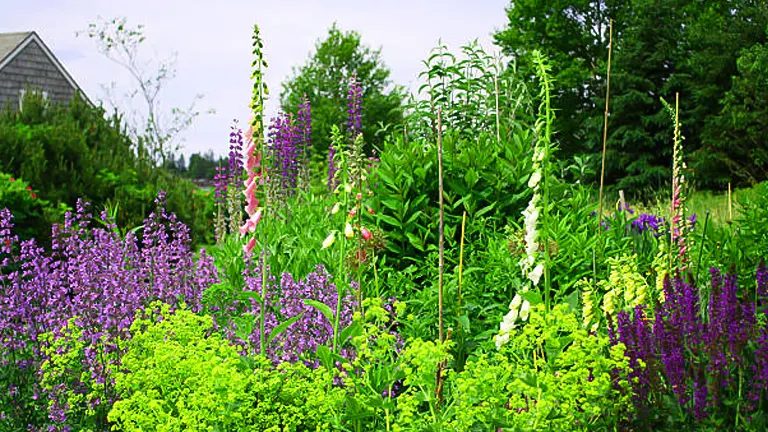
Going beyond basic native plant selection, consider biodiversity in your garden. Introducing a variety of native plants supports local wildlife, including pollinators and beneficial insects, which can naturally reduce pest populations and improve pollination. Adaptive plants, those not native but well-suited to the local environment, can also be a valuable addition, offering resilience and diversity without the need for intensive care or resources.
Perennials and Beyond: Strategic Plant Choices
Incorporate edible perennials such as herbs (e.g., rosemary, thyme), fruits (e.g., berries, figs), and vegetables (e.g., asparagus, rhubarb) to enjoy harvests year after year. Also, consider the layering concept in permaculture by including ground covers, shrubs, and trees that support each other’s growth and create a self-sustaining ecosystem, minimizing maintenance and inputs.
2. Eco-Friendly Gardening Practices
Advanced Composting Techniques
Explore vermicomposting, using worms to break down kitchen scraps more efficiently, producing high-quality compost and liquid fertilizer. This method is particularly suitable for small spaces and accelerates the composting process.
Water Conservation Strategies
Expand on rainwater harvesting by implementing drip irrigation systems connected to your rain barrels, ensuring precise water delivery directly to the roots where it’s needed most, further reducing water usage and cost. Consider xeriscaping principles, designing your garden to minimize water use by grouping plants with similar water needs and using mulches to retain soil moisture.
3. Vertical Gardening and Space Maximization
Innovative Vertical Structures
Introduce upcycled materials for vertical gardening, such as old ladders for tiered plant displays or repurposed pallets for vertical herb gardens. Green walls and living fences can serve dual purposes of privacy screening and productive gardening spaces, utilizing vertical square footage effectively.
Specialized Planting Techniques for Vertical Gardens
For vertical gardening, select plants that naturally thrive in vertical environments, such as vining vegetables (e.g., cucumbers, beans) and cascading flowers (e.g., petunias, trailing lobelia). Utilize hydroponic or aeroponic systems for edible plants on balconies or patios, which can produce higher yields in smaller spaces without soil, though they require an initial investment.
DIY Landscaping Projects
Step-by-Step Guides for DIY Projects
There are numerous simple yet impactful DIY projects you can undertake to enhance your garden. For example, building your own raised beds from reclaimed wood not only saves money but also allows for better soil and drainage control. Creating garden paths from repurposed bricks or stones can add charm and functionality to your outdoor space.
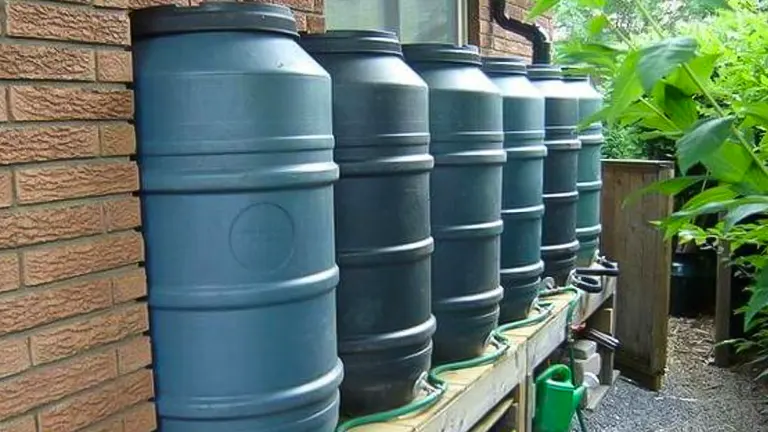
Comprehensive Step-by-Step Guide: Building a Rain Barrel System
- Materials Needed:
- Large plastic barrel (55 gallons is standard)
- Spigot kit with washers and locknuts
- Overflow valve
- Mosquito mesh to cover the top
- Downspout diverter or flexible downspout extension
- Drill with bits (to match the size of your spigot and overflow valve)
- Teflon tape
- Steps to Build:
- Prepare the Barrel: Clean your barrel thoroughly to remove any residues if it’s not new. Choose a location near a downspout for easy water collection.
- Install the Spigot: About 2 inches from the bottom of the barrel, drill a hole for your spigot. Wrap Teflon tape around the spigot threads to ensure a waterproof seal, insert it into the hole, and secure it with washers and a locknut.
- Set Up Overflow Valve: Drill another hole near the top of the barrel for the overflow valve. Install the valve following the same method as the spigot. Attach a hose to the valve to direct excess water away from your foundation.
- Cover the Top: Cut mosquito mesh to fit over the opening of the barrel. Secure it in place to prevent debris from entering and to stop mosquitoes from breeding.
- Connect to Downspout: Install the downspout diverter or attach a flexible downspout extension to direct rainwater from your gutter into the barrel.
- Completion: Place your rain barrel on a sturdy platform to increase water pressure and ensure easy access to the spigot. Now, you have a sustainable system to collect and reuse rainwater for your garden.
Expanded Creative Upcycling Ideas
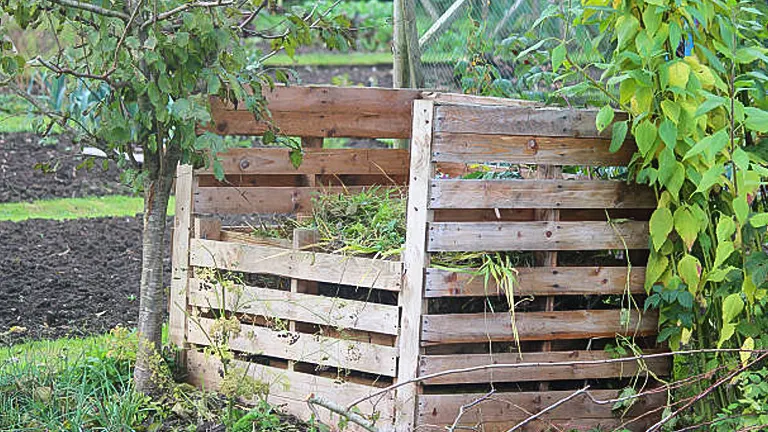
- Wine Bottle Border: Use empty wine bottles, neck down, to create an attractive and colorful border for your garden beds. This not only recycles bottles but also adds a sparkling touch to your garden when the sun hits the glass.
- Pallet Compost Bin: Transform wooden pallets into a three-sided compost bin by securing them together. This easy and cost-effective method provides ample space for composting and can be easily moved or expanded as needed.
- Old Furniture Planters: Convert an old dresser, chair, or bureau into a unique planter. Simply add a liner, fill with soil, and plant your favorite flowers or herbs. This approach adds a whimsical, vintage feel to your garden space.
Fostering Community Involvement
- Community Project: Pollinator Garden: Organize a community effort to create a pollinator-friendly garden. Start by planning a garden layout that includes a variety of native flowering plants known to attract bees, butterflies, and other pollinators. Invite community members to contribute plants, materials, and labor.
- Skill-Sharing Workshops: Partner with local gardening clubs or environmental groups to host workshops in your community garden. Topics could range from sustainable gardening practices to DIY garden crafts, encouraging skill development and fostering a sense of community.
- Seed and Plant Swap Events: Regularly host swap events to encourage diversity in local gardens and reduce costs for gardeners. This is an excellent way for beginners to get started and for experienced gardeners to share their surplus and knowledge.
Ongoing Care and Maintenance
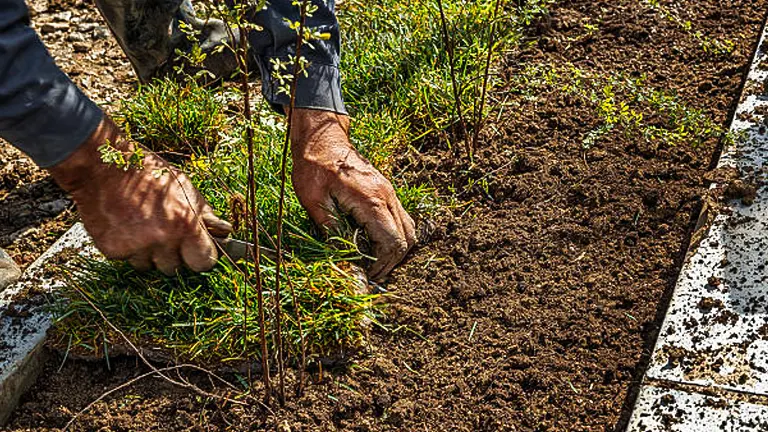
Sustainable Maintenance Practices: A well-maintained garden requires less intervention and expense over time. Mulching beds can suppress weeds, retain soil moisture, and reduce the need for watering and fertilizers. Implementing a drip irrigation system or using soaker hoses can deliver water directly to the roots of your plants, where it’s needed most, reducing waste and saving water.
Seasonal Care Calendar: Keeping a seasonal care calendar helps you stay on top of gardening tasks, ensuring your garden remains healthy and vibrant throughout the year. This includes timely pruning, mulching, planting, and harvesting, which can prevent costly remedial work later.
Adapting and Evolving Your Garden Over Time: Gardens are living, changing spaces. As your garden grows and evolves, so too will your knowledge and experience. Embrace this journey, and be open to making adjustments to your garden plan. This flexible approach allows you to respond to changes in your garden’s needs, your budget, and your personal preferences, ensuring your garden continues to thrive and bring joy.
Advanced Budget Gardening Techniques
Leveraging Permaculture Principles
- Introduction to Permaculture: Briefly explain the concept of permaculture and its emphasis on sustainable and self-sufficient garden ecosystems. Highlight how permaculture principles can be applied to backyard gardens to reduce maintenance costs and increase yields over time.
- Designing with Nature: Discuss the importance of observing and working with the natural features and conditions of your garden space. This includes utilizing rainwater runoff for irrigation, planting native species to attract beneficial insects, and designing plant layouts that support each other (companion planting).
Water-wise Gardening for Savings
- Xeriscaping: Introduce the concept of xeriscaping, or dry landscaping, which involves selecting drought-resistant plants and creating a garden design that minimizes water use. Offer tips on how to implement xeriscaping principles in your garden to save on water bills.
- Mulching Techniques: Dive deeper into the types of mulch (organic and inorganic) and their benefits, such as moisture retention, temperature regulation, and weed suppression. Provide guidance on how to properly apply mulch and how often to replace it.
Enhancing Soil Fertility on a Budget
- DIY Compost: Expand on the basics of creating a compost pile or bin, detailing what materials can be composted, the ratio of greens to browns, and how to maintain the compost to speed up the decomposition process.
- Natural Soil Amendments: Discuss other cost-effective ways to enhance soil fertility, including the use of green manures (cover crops), homemade liquid fertilizers (e.g., compost tea), and the incorporation of biochar to improve soil structure and nutrient retention.
Pest and Disease Management Economically
- Integrated Pest Management (IPM): Explain the principles of IPM, focusing on preventive cultural practices, mechanical controls (e.g., handpicking pests, barriers), and biological controls (introducing or encouraging natural predators), before resorting to chemical treatments.
- Homemade Pesticides and Fungicides: Provide recipes for effective, natural pest and disease control solutions that can be made from common household ingredients, reducing the need for expensive, chemical-based products.
Maximizing Yield in Small Spaces
- Succession Planting: Offer strategies for succession planting, where crops are planted at intervals to ensure a continuous harvest throughout the growing season. This technique maximizes the use of space and extends the productivity of the garden.
- Square Foot Gardening: Introduce the concept of square foot gardening, a method that divides the garden into small, intensely planted squares. Discuss how this approach can increase yield, reduce maintenance, and make the best use of limited space.
Conclusion
Landscaping on a budget is not only achievable but can also be a fulfilling and creative endeavor. By adopting a strategic approach to planning, choosing the right plants, undertaking DIY projects, and maintaining your garden with care, you can create a beautiful outdoor space that reflects your personal style and meets your financial constraints. Remember, the most important ingredients for a thriving garden are time, patience, and a little bit of creativity.
FAQs
- How can I landscape my garden on a tight budget?
Plan and prioritize your projects. Use native plants for lower maintenance and costs, find second-hand tools and materials, undertake DIY projects like building raised beds from reclaimed wood, engage in community plant swaps, and make your own compost to save on soil amendments. - What are the best affordable tools every gardener should own?
Essential, affordable gardening tools include a sturdy spade, reliable pruning shears, and a versatile garden fork. Opt for high-quality, multi-use tools and consider a multi-tool system where one handle can attach to various heads to save space and money. - How can I find affordable gardening materials?
Check end-of-season sales at garden centers, explore online marketplaces for second-hand items, visit construction sites for free leftover materials, and participate in community upcycling or exchange groups. - Can I save money by starting plants from seeds instead of buying seedlings?
Yes, starting your garden from seeds can significantly reduce costs compared to purchasing seedlings or mature plants. It also offers a wider variety of plant options and the satisfaction of growing plants from the very beginning. - What are some effective DIY projects for budget landscaping?
Building your own compost bin, creating a rainwater harvesting system, making garden paths from repurposed bricks or stones, and upcycling items like old tires into planters are all cost-effective DIY landscaping projects. - How can vertical gardening help me save space and money?
Vertical gardening maximizes limited space by utilizing vertical surfaces for growing plants. It’s especially cost-effective for those in urban areas with small yards or balconies, as it allows for a productive garden without the need for extensive ground space. - Are there any tips for reducing water usage in my garden to save on bills?
Implementing a drip irrigation system, mulching to retain soil moisture, choosing drought-resistant plants, and collecting rainwater are all effective strategies for reducing water usage and saving on your water bill. - How can engaging with my community help reduce gardening costs?
Participating in plant and seed exchanges, attending workshops hosted by local gardening clubs, and organizing community garden days can provide free or low-cost resources, shared knowledge, and even labor exchange, all of which can help reduce individual gardening costs.
Embracing the journey of budget-friendly landscaping opens the door to creativity, sustainability, and community. With the right tools, techniques, and a touch of ingenuity, your garden can flourish without straining your finances. Let your garden be a testament to the beauty and abundance that thoughtful, cost-effective choices can bring.

Benjamin Brooks
Forestry AuthorGreetings! I'm Benjamin Brooks, and my journey over the past 15 years has revolved around the fascinating realms of content creation, expertise in snow clearing, and the intricate world of lumberjacking and landscaping. What began as a simple curiosity about the natural world and heavy machinery has evolved into a passionate profession where my love for crafting words intertwines seamlessly with my lumberjacking and garden skills.

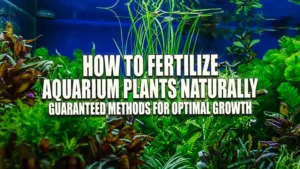

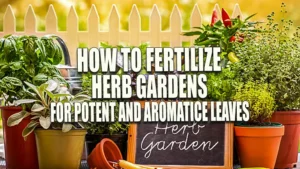



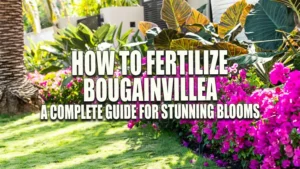
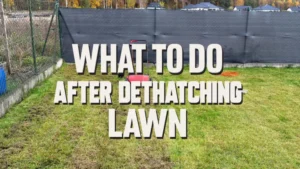
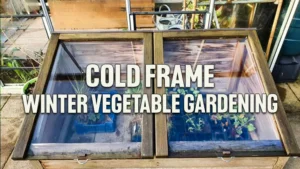
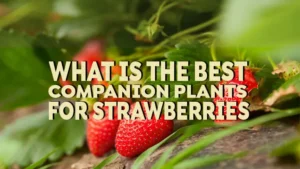


Leave your comment